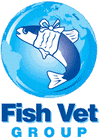
As in all other animal production and manufacturing sectors, quality assurance has been developed to give the consumer some confidence regarding the provenance of their purchases in terms of safety and quality and also in terms of animal health and welfare. It is interesting that most market research shows that the consumer's principal concern is with the safety of their food purchases i.e. to have some assurance that their food is not full of chemicals, antibiotics and pollutants etc.
Environmental impact and animal welfare are apparently of less concern with the majority of people buying food and are of even less concern when it comes to ingredients which have been further processed i.e. there may be some consumer interest in the welfare of a fish when it is laid out on the wet fish counter of a supermarket, but there is apparently less interest when that fish is presented in a salmon and spinach lasagne. It's a bit like people insisting on free range eggs, but happily consuming battery eggs in a cake.
Most of the quality assurance schemes and retailers codes of practice reflect the consumer demand for assurance over the safety of their purchases and ensure that producers market a safe product. When it comes to farmed fish, consumer safety is covered by detailed standards regarding the use of medicinal products, hygiene chemicals, residue analysis for pollutants etc. Contrary to some people's beliefs and the ill-informed opinion of some newsreaders, very few medicinal products are used in farmed fish and I know many farms which haven't used antibiotic treatment for many years.
Much of this is due to the development of good vaccination programmes, but also to the improvements which have been made in the general husbandry and management of farmed fish. Some quality assurance schemes use the minimal use of treatment chemicals as a 'key performance indicator' to demonstrate the safety of their product and the onus is on the producer to continue to manage their fish in such a way to minimise the need to use medicines.
With fish welfare, the assurance schemes and codes of practice vary widely in their requirements and, even if consumers are less concerned about welfare than food safety, this is no excuse for not ensuring that quality schemes set the highest standards for fish welfare throughout the whole production cycle. In 2001 The Farm Animal Welfare Council (FAWC) published an interim report on the animal welfare implications of farm assurance schemes and expressed concern that schemes do not fully realise their potential for maximising animal welfare.
To be fair there are schemes which have been developed with animal welfare as the principal aim, but with some of the schemes there is a real opportunity to develop the standards in relation to the welfare of the fish. And this brings us back to quality. Fish welfare and quality go hand in hand and by ensuring that all production processes throughout the life and death of the fish are aimed at maintaining the welfare of the fish, this will be strongly reflected in the final quality of that fish. Of course this quality can be totally ruined by poor post-harvest handling but that's another story.
Source: Fish Vet Group - July 2005

